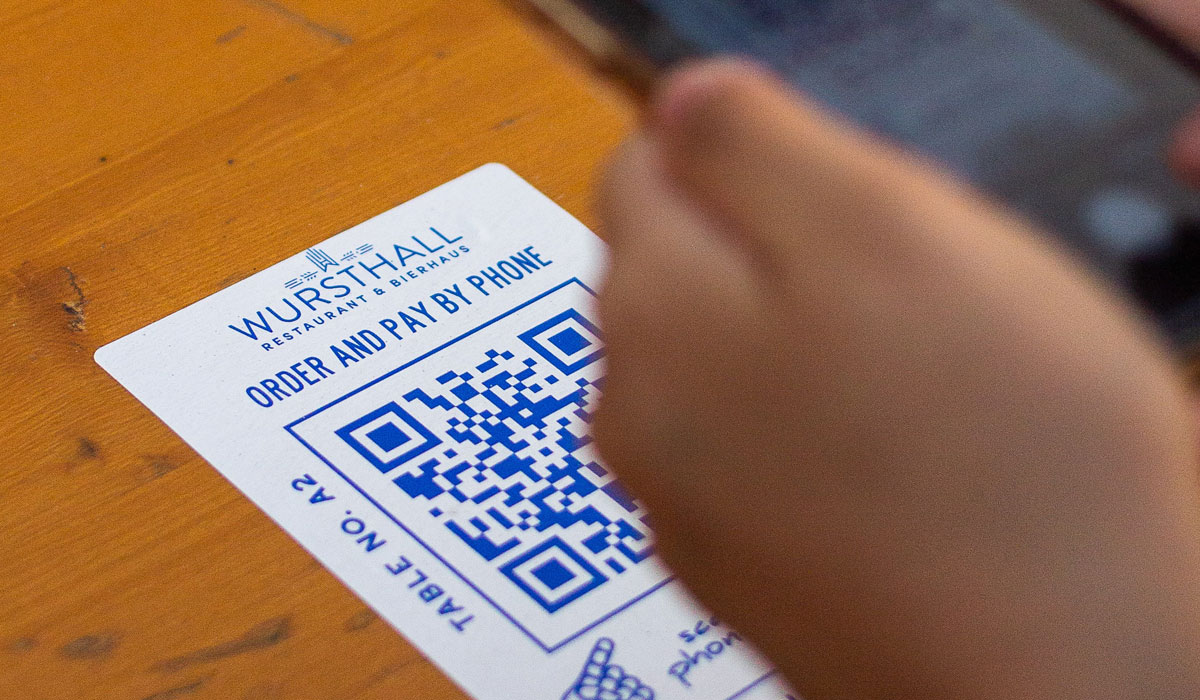According to a widely cited psychology study, it takes an average of 66 days for a behavior to become permanent. What once were pandemic-driven paths to economic recovery in the restaurant industry are now customer-driven expectations—with no signs of slowing down. To survive revenue disruption and other financial challenges, restaurants need to find ways to adapt into the technology-driven future of meal ordering and delivery that seems to be here to stay.
The pandemic didn’t create technology innovation but rather accelerated trends already in motion. For example, a 2019 report found that nearly 60 percent of restaurant occasions were already off-premises, with consumers saying they were using drive-through, delivery and take-out more often than the year before. This year took innovation to the extreme—it’s as if we climbed into a time machine and emerged several years in the future, where virtual menus, mobile ordering and contactless payments are the norm, not the exception.
Now it’s not so much a question of how to keep up or leverage the latest gadget, but how to make the intersection of convenience, health safety, and technology a core business strategy. Following are some steps restaurant operators of all sizes can take today to accelerate the innovation process and help future-proof their businesses:
Adopt a Mobile-First Approach
Quick-service restaurants pioneered ordering by mobile app. Chains like Domino’s offer voice interface and even ordering through social media platforms.
But while the technology isn’t new, adoption before COVID-19 was slow to say the least, with only 18 percent of restaurant operators offering mobile ordering via proprietary apps.
The pandemic changed the playing field. As customers adopted mobile ordering in droves as a safe and convenient option, restaurants that had already mastered this piece were at a major advantage. This shifting landscape also means that operators who haven’t invested in mobile ordering and delivery should consider doing so sooner than later.
This is especially true in the quick-service restaurant space, with many brands posting digital sales records. Chipotle’s second-quarter digital sales grew an astounding 216 percent year-over-year, comprising 61 percent of total sales. And Yum! saw digital orders at all of its brands (Taco Bell, Pizza Hut and KFC) hit all-time highs.
Fortunately, launching a proprietary mobile app no longer requires custom programming or even a lot of time or money. There are a variety of “plug and play” third party services that offer full branding and top features to get operators rolling with mobile, such as appypie and AppInstitute. And best of all, it only takes a few minutes to start accepting orders.
Embrace Contactless Everything
Mobile ordering is part of the overarching trend in contactless customer interactions. This too was well on its way in 2019—when more than 100 million tap-and-go credit cards were issued in the United States—with the pandemic making contactless interactions essential. Eighty-two percent of consumers worldwide now view contactless as “the cleaner way to pay,” with 74 percent saying they plan to continue using contactless payment post-pandemic.
Restaurants that have NFC (Near Field Communications) technology need to promote it, and those yet to upgrade must do so quickly or remain at a competitive disadvantage. Companies like Toast and Square can make contactless implementation easy, and can even integrate with existing touch or traditional systems.
“Contactless” is not only for customer payments but also for internal money handling and check writing. The fewer contact points, the better for everyone—and that applies at point of sale (POS) as well as the back of the house, such as when doing accounts payable. Investing in online or app-based payment systems, or in POS terminals equipped for tap-and-go payment options, saves front-line employees time and minimizes contact.
Crack the QR Code
The pandemic has made what’s old new again—and the venerable QR code from the 1990s is ready for its closeup.
The magic of QR codes is in their simplicity. Scanning a code with any smartphone gives guests access to touch-free menus, specials, discounts or virtually anything else the operator chooses to share, including video or other multimedia content.
Although the codes require a website for hosting the content, you don’t need a web developer to get started. Beaconstac, for example, offers dynamic codes with a customizable dashboard that can be modified anytime. Codes can bring up different menus for multiple locations, even bringing up the appropriate menu for that time of day. Scanovia and Ritual are also options, and companies like GoTab also offer contactless ordering via a QR code.
There are marketing benefits too, such as integrating guest surveys or offering newsletter signups. And it’s all accessible via a device that customers already carry.
These technologies, along with other leading-edge applications such as virtual online chatbots and voice ordering at kiosks, make it clear that the restaurant industry is at a critical inflection point. Innovation will not only help businesses recover, but also pave the way forward for years to come.
Cristin O’Hara is a Managing Director and Group Head of Bank of America Merrill Lynch’s Restaurant Group (which includes BAML’s McDonald’s franchisee business) which is located in both Boston, MA as well as Atlanta, GA with bankers also in Houston, Charlotte, and South Carolina. Bank of America Merrill Lynch’s Restaurant Group provides global access to capital, best practices across a broad platform for working capital management, markets, investment banking, 401K and deferred compensation tools, private wealth management and many other industry leading products and services available through the Bank of America Merrill Lynch umbrella in addition to deep industry expertise related to multi unit restaurant franchisees and franchisors.













